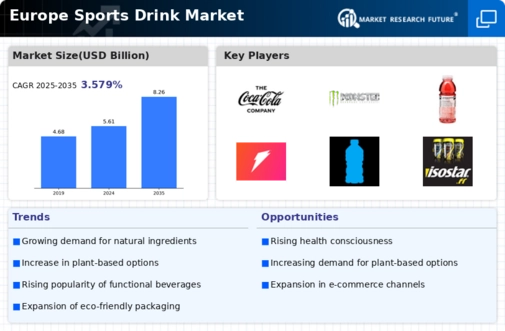The has been experiencing notable trends driven by increased consumer awareness about health and fitness, particularly among the younger demographic. The growing participation in sports and fitness activities across Europe fuels the demand for sports drinks that offer hydration and replenish electrolytes. Many consumers are now looking for products that contain natural ingredients, with brands focusing on cleaner labels, thereby addressing a significant market driver related to health consciousness.
Moreover, there is an ongoing shift towards functionality in sports drinks, with products that cater to specific needs, such as recovery, energy, or endurance.Consumers are also attracted to innovations in flavors and formulations, as they are in search of a wider range of flavors and improved taste experiences. Another trend that is in accordance with the preferences of numerous European consumers is the increase in plant-based and organic alternatives, which prioritize sustainability and ethical sourcing. Opportunities are abundant as a variety of segments within the sports drink market begin to emerge.
For instance, the demand for low-calorie, low-sugar alternatives is on the rise, which is partially due to the ongoing attention paid to obesity and related health concerns in Europe. Brands that are capable of innovation while adhering to these health trends have the potential to establish a devoted customer base. In addition, brands can effectively communicate with their target audience by utilizing social media platforms to increase awareness of new product offerings and collaborating with fitness influencers.
In recent years, there has been a growing emphasis on the importance of hydration in a variety of contexts, including daily activities, non-competitive athletics, and athletic performance. This trend underscores the significance of hydration in the context of overall well-being, resulting in a broader demographic receiving targeted marketing campaigns. As a result, in order to remain competitive in the dynamic Europe sports drink market, brands must adjust to these changing consumer preferences and behaviors.





















Leave a Comment